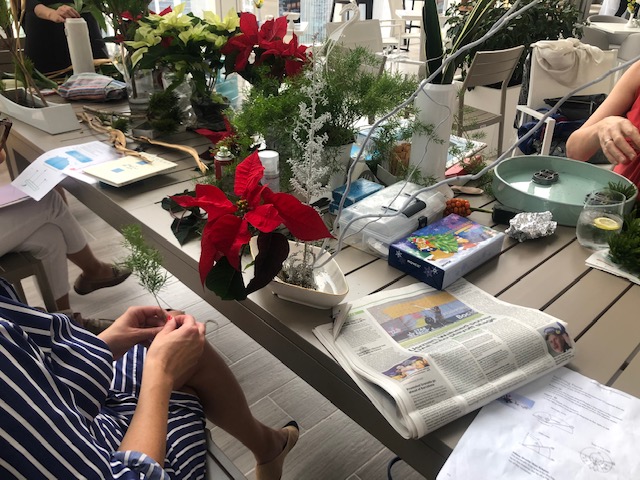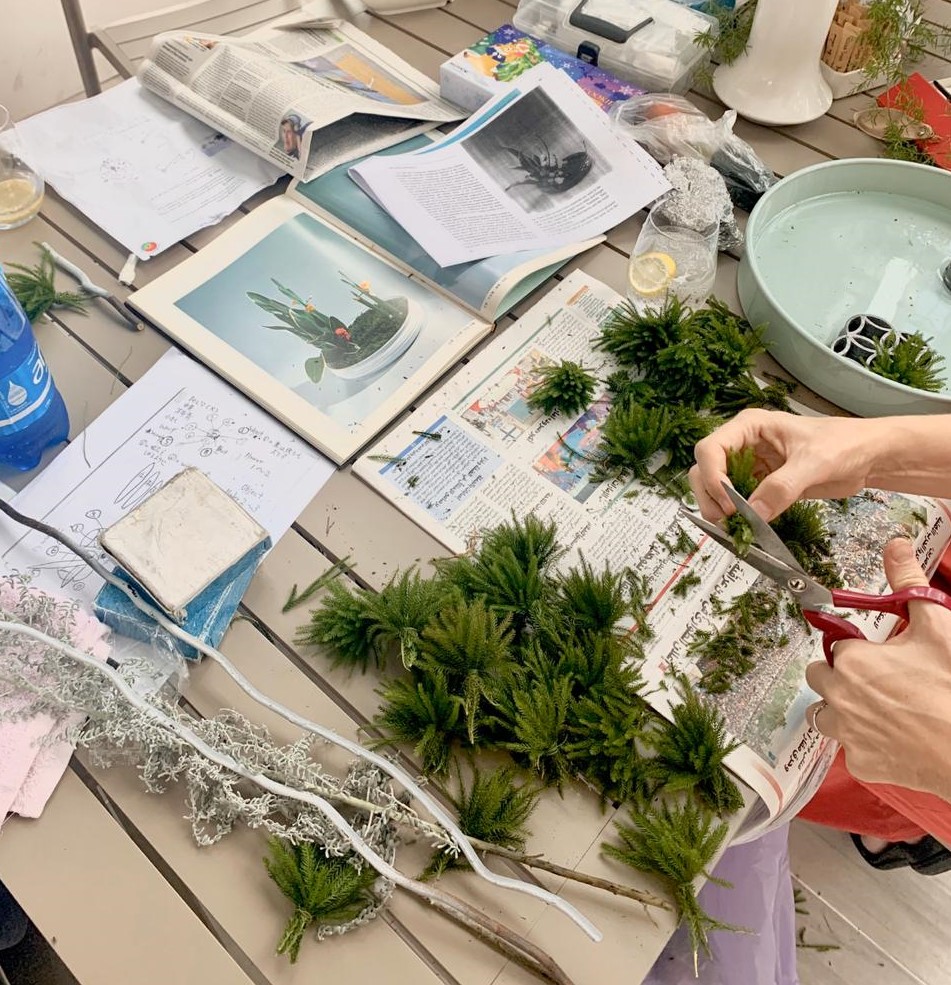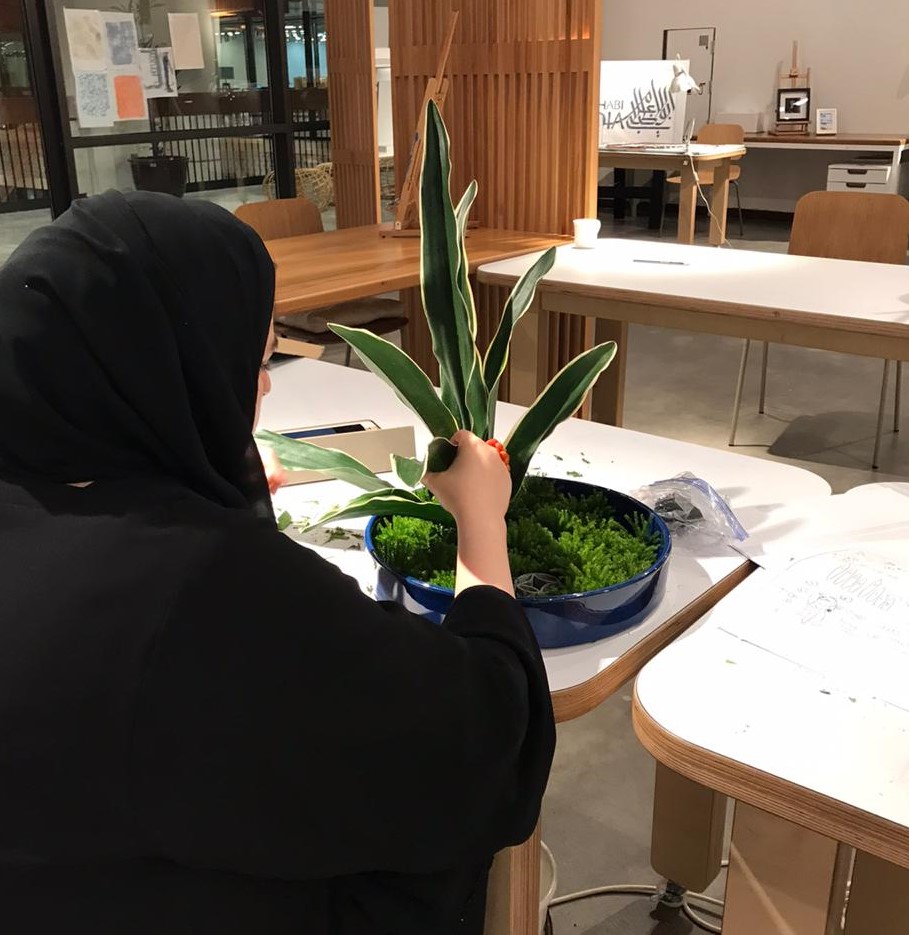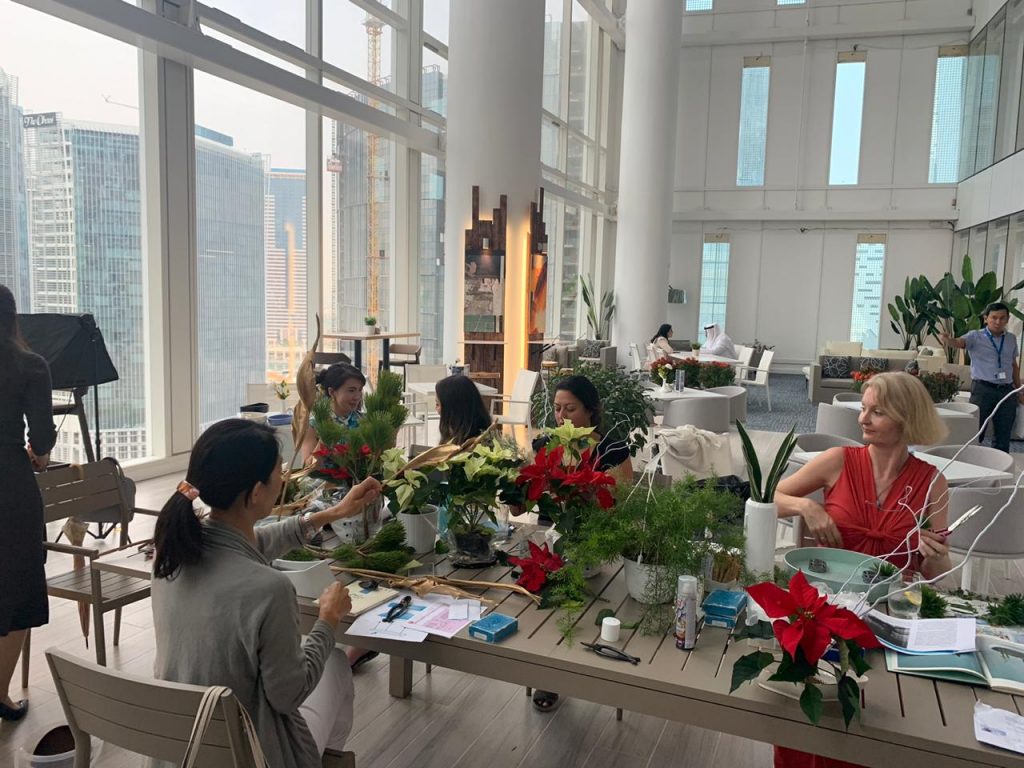







Dubai: Ikebana, the traditional Japanese art of flower arrangement, is a process of meditation to some, and a stroll down memory lane for others.
For Ikebana professor Harue Oki, it performs both roles.
Oki, who is a professor at the Ohara School of Ikebana Japan, had been introduced to the art when she was fifteen years old.
Ikebana is the art of arranging plants using the concepts of minimalism and simplicity in an empty space.
“When I moved to Dubai in 2014 and started living abroad, I realized I missed my culture and Ikebana so much,” she said.
Oki said that when she was younger, she spent time with her mother’s traditional family and had been taught that there were three sets of skills that all Japanese people needed to have at that time in order to marry.
“In my grandmother’s generation, all women needed to learn the art of Ikebana, tea ceremonies and kimonos,” she said.
Oki, who has a background in finance and banking, said she started her own Ikebana classes in 2014.
“Every Monday I give classes in Abu Dhabi and every Tuesday in Dubai. I have nearly 50 students, but not all of them come every week. I have around 10 to 15 regular students,” she said.
Oki said she did not consider starting classes when she first moved to Dubai, until she came across two Emirati brothers, popular for publishing the Brownbook magazines, Ahmed and Rashid bin Shabib.
Oki described the brothers as “cultural ambassadors” of the UAE who encouraged her to start the classes.
“They told me, ‘the UAE is a country that is full of different cultures, however, it is missing tradition and art,’” she said. “I met with them and they were the first to sponsor my classes. It started growing and it became an official study group of the Ohara School of Ikebana Japan in 2016.”
Sultan Hareb Al-Falahi, CEO of Sultan Investments, currently sponsors the Ikebana classes, Oki said.
“He is a big fan of Japanese culture. I coincidentally met him at a time when I was looking for a new venue for my classes, and he was kind enough to offer his space,” she added.
Oki, who is also the Middle East representative of the Japan National Tourism Organization, said she often gets students of Emirati, European and Japanese nationalities.
“The Abu Dhabi classes are usually 99 percent Emirati students. In general, Emirati people are very fond of Japanese culture. I think the younger generations are more intrigued by the simplicity and the minimalistic essence of our culture,” Oki added.
“The students learn to appreciate the four seasons and nature of Japan,” she said.
She said that one of her students, Amani Al-Shehhi, will be the first Emirati to become a certified Ikebana instructor.
“Amani, a young Emirati who has never seen the natural mountain landscape of Japan, is fully able to understand the concept of Ikebana and express it perfectly, the same way I would after five years of practicing the art,” she said.
Oki explained that since Al-Shehhi comes from an “outsider perspective,” she can grasp the concept from a different point of view.
Another student who recently reached the instructor level in Ikebana, Dubai expat Martynke Tait, said she loved the art for its simplicity in its structure and composition.
“I look at every individual flower and try to figure out the best way to make the beauty of the flower expressed in the arrangement,” the Dutch expatriate said. “I love working with living material, its like bringing nature into your heart.”
Tait said that a book about Ikebana caught her eye a few years ago, and when she found out about Oki’s Ikebana class, she immediately decided to join.
She began the course about three years ago and has recently developed her Ikebana skills to that of an instructor’s level.